Circularity as a Climate Change Mitigation Strategy in the Building Sector: The Stakeholder’s Involvement in the Interconnected Life Cycle Phases
Abstract
1. Introduction
2. Literature Review
3. Materials and Methods
4. Results and Discussion
5. Conclusions
Author Contributions
Funding
Institutional Review Board Statement
Informed Consent Statement
Data Availability Statement
Conflicts of Interest
References
- Abbass, K.; Qasim, M.Z.; Song, H.; Murshed, M.; Mahmood, H.; Younis, I. A review of the global climate change impacts, adaptation, and sustainable mitigation measures. Environ. Sci. Pollut. Res. 2022, 29, 42539–42559. [Google Scholar] [CrossRef] [PubMed]
- Shivanna, K.R. Climate change and its impact on Biodiversity and Human Welfare. Proc. Indian Natl. Sci. Acad. 2022, 88, 160–171. [Google Scholar] [CrossRef]
- Huang, W.; Gao, Q.-X.; Cao, G.-L.; Ma, Z.-Y.; Zhang, W.-D.; Chao, Q.-C. Effect of urban symbiosis development in China on GHG emissions reduction. Adv. Clim. Chang. Res. 2016, 7, 247–252. [Google Scholar] [CrossRef]
- European Environment Agency [EEA]. The European Environment–State and Outlook 2020: Knowledge for Transition to a Sustainable Europe. 2020. Available online: https://www.eea.europa.eu/soer/publications/soer-2020 (accessed on 20 March 2023).
- International Panel on Climate Change [IPCC]. Global Warming of 1.5 °C. An IPCC Special Report on the Impacts of Global Warming of 1.5 °C Above Pre-Industrial Levels and Related Global Greenhouse Gas Emission Pathways, in the Context of Strengthening the Global Response to the Threat of Climate Change, Sustainable Development, and Efforts to Eradicate Poverty; Masson-Delmotte, V., Zhai, P., Pörtner, H.-O., Roberts, D., Skea, J., Shukla, P.R., Pirani, A., Moufouma-Okia, W., Péan, C., Pidcock, R., et al., Eds.; Cambridge University Press: Cambridge, UK; New York, NY, USA, 2018; 616p. [Google Scholar] [CrossRef]
- Lipczynska-Kochany, E. Effect of climate change on humic substances and associated impacts on the quality of surface water and groundwater: A Review. Sci. Total Environ. 2018, 640–641, 1548–1565. [Google Scholar] [CrossRef]
- Murshed, M.; Dao, N.T. Revisiting the CO2 emission induced EKC hypothesis in South Asia: The role of Export Quality Improvement. GeoJournal 2020, 87, 535–563. [Google Scholar] [CrossRef]
- Michel, D.; Eriksson, M.; Klimes, M. Climate change and (in)security in Transboundary River basins. In Handbook of Security and the Environment; Edward Elgar Publishing: Cheltenham, UK, 2021; pp. 62–75. [Google Scholar] [CrossRef]
- National Oceanic and Atmospheric Administration [NOAA]-National Centers for Environmental Information. State of the Climate: Global Climate Report for 2021. 2021. Available online: https://www.ncdc.noaa.gov/sotc/global/202113 (accessed on 20 March 2023).
- World Meteorological Organisation. Atlas of Mortality and Economic Losses from Weather, Climate and Water Extremes (1970–2019) (WMO-No. 1267). 2021. Available online: https://library.wmo.int/index.php?lvl=notice_display&id=21930#.Y4SwlHbMLIV (accessed on 20 March 2023).
- National Aeronautics and Space Administration [NASA]. (n.d.). Sea Level. NASA. Available online: https://climate.nasa.gov/vital-signs/sea-level/ (accessed on 20 March 2023).
- Jahanzad, E.; Holtz, B.A.; Zuber, C.A.; Doll, D.; Brewer, K.M.; Hogan, S.; Gaudin, A.C. Orchard recycling improves climate change adaptation and mitigation potential of Almond Production Systems. PLoS ONE 2020, 15, e0229588. [Google Scholar] [CrossRef] [PubMed]
- International Panel on Climate Change [IPCC]. Climate Change 2022: Impacts, Adaptation, and Vulnerability. Contribution of Working Group II to the Sixth Assessment Report of the Intergovernmental Panel on Climate Change; Pörtner, H.-O., Roberts, D.C., Tignor, M., Poloczanska, E.S., Mintenbeck, K., Alegría, A., Craig, M., Langsdorf, S., Löschke, S., Möller, V., et al., Eds.; Cambridge University Press: Cambridge, UK; New York, NY, USA, 2022; 3056p. [Google Scholar] [CrossRef]
- United Nations [UN]. The Sustainable Development Goals Report. 2022. Available online: https://www.un.org/sustainabledevelopment/progress-report/ (accessed on 20 March 2023).
- Ritchie, H.; Roser, M.; Rosado, P. CO2 and Greenhouse Gas Emissions. 2020. Available online: https://ourworldindata.org/co2-and-other-greenhouse-gas-emissions (accessed on 20 March 2023).
- European Commission [Eurostat]. Annual Activity Report. 2020. Available online: https://commission.europa.eu/system/files/2021-06/annual-activity-report-2020-eurostat_en.pdf (accessed on 20 March 2023).
- International Energy Agency [IEA]. World Energy Outlook 2019. Updated MEPS–Central Air Conditioners and Heat Pumps–Policies; International Energy Agency: Paris, France; Available online: https://www.iea.org/policies/11456-updated-meps-central-air-conditioners-and-heat-pumpss://www.iea.org/reports/world-energy-outlook-2019 (accessed on 20 March 2023).
- International Energy Agency [IEA]. World Energy Outlook 2022. 2022. Available online: https://iea.blob.core.windows.net/assets/830fe099-5530-48f2-a7c1-11f35d510983/WorldEnergyOutlook2022.pdf (accessed on 20 March 2023).
- Feige, A.; Wallbaum, H.; Krank, S. Harnessing stakeholder motivation: Towards a Swiss sustainable building sector. Build. Res. Inf. 2011, 39, 504–517. [Google Scholar] [CrossRef]
- Singh, P. Buildings and Climate Change. J. Energy Environ. Carbon Credit. 2012, 61–67. [Google Scholar]
- Global Alliance for Buildings and Construction [GlobalABC]; International Energy Agency [IEA]; United Nations Environment Program [UNEP]. Global Status Report for Buildings and Construction; IEA: Paris, France, 2019. [Google Scholar]
- Global Alliance for Buildings and Construction [GlobalABC]; International Energy Agency [IEA]; United Nations Environment Program [UNEP]. GlobalABC Roadmap for Buildings and Construction 2020–2050; IEA: Paris, France, 2020. [Google Scholar]
- United Nations Environment Program [UNEP]. 2020 Global Status Report for Buildings and Construction: Towards a Zero-emissions, Efficient and Resilient Buildings and Construction Sector; United Nations Environment Program: Nairobi, Kenya, 2020. [Google Scholar]
- United Nations Environment Program [UNEP]. 2021 Global Status Report for Buildings and Construction: Towards a Zero-emission, Efficient and Resilient Buildings and Construction Sector; United Nations Environment Program: Nairobi, Kenya, 2021. [Google Scholar]
- United Nations Environment Program [UNEP]. 2022 Global Status Report for Buildings and Construction: Towards a Zero-emission, Efficient and Resilient Buildings and Construction Sector; United Nations Environment Program: Nairobi, Kenya, 2022. [Google Scholar]
- United Nations Environment Program [UNEP]. 2009 Annual Report. 2009. Available online: https://www.unep.org/resources/annual-report/unep-2009-annual-report (accessed on 20 March 2023).
- United Nations [United Nations Office for Disaster Risk Reduction]. Sendai Framework for Disaster Risk Reduction 2015–2030. 2015. Available online: https://www.undrr.org/publication/sendai-framework-disaster-risk-reduction-2015-2030 (accessed on 20 March 2023).
- United Nations Framework Convention on Climate Change [UNFCCC]. Nationally Determined Contributions under the Paris Agreement. Synthesis Report by the Secretariat. Bonn: United Nations Framework Convention on Climate Change. 2021. Available online: https://unfccc.int/documents/306848 (accessed on 20 March 2023).
- Marrakech Partnership for Global Climate Action. Human Settlements-Climate Action Pathway. 2021. Available online: https://unfccc.int/sites/default/files/resource/HS_Vision%-26Summary_2.1_0.pdf (accessed on 20 March 2023).
- International Energy Agency [IEA]. Updated MEPS–Central Air Conditioners and Heat Pumps–Policies; International Energy Agency: Paris, France, 2020; Available online: https://www.iea.org/policies/11456-updated-meps-central-air-conditioners-and-heat-pumps (accessed on 20 March 2023).
- Dodoo, A.; Gustavsson, L.; Sathre, R. Lifecycle carbon implications of conventional and low-energy multi-story timber building systems. Energy Build. 2014, 82, 194–210. [Google Scholar] [CrossRef]
- Dodoo, A.; Gustavsson, L.; Sathre, R. Lifecycle primary energy analysis of low-energy timber building systems for multi-story residential buildings. Energy Build. 2014, 81, 84–97. [Google Scholar] [CrossRef]
- Gustavsson, L.; Sathre, R.; Dodoo, A. Climate Change Effects over the Lifecycle of a Building-Report on Methodological Issues in Determining the Climate Change Effects over the Life Cycle of a Building: Final Report for Boverket. 2015. Available online: http://urn.kb.se/resolve?urn=urn:nbn:se:lnu:diva-46701 (accessed on 20 March 2023).
- Li, L. Integrating climate change impact in new building design process: A review of Building Life Cycle Carbon Emission Assessment Methodologies. Clean. Eng. Technol. 2021, 5, 100286. [Google Scholar] [CrossRef]
- Cardoso Teixeira, J.M. Construction Site Environmental Impact in Civil Engineering Education. Eur. J. Eng. Educ. 2005, 30, 51–58. [Google Scholar] [CrossRef]
- Shen, L.Y.; Lu, W.S.; Yao, H.; Wu, D.H. A computer-based scoring method for measuring the environmental performance of construction activities. Autom. Constr. 2005, 14, 297–309. [Google Scholar] [CrossRef]
- Bertil, L.; Praene, J.P.; Sora, F.; Rakotoson, V. Environmental impact of the construction sector on life cycle: Evidence of the insularity effect. In Proceedings of the International Conference on Energy, Environment and Climate Change (ICEECC2019), Réduit, Mauritius, 2–4 July 2019; p. hal-02015685. [Google Scholar]
- Vasilca, I.-S.; Nen, M.; Chivu, O.; Radu, V.; Simion, C.-P.; Marinescu, N. The management of environmental resources in the construction sector: An empirical model. Energies 2021, 14, 2489. [Google Scholar] [CrossRef]
- European Commission [EC]. EU Construction and Demolition Waste Protocol. 2016. Available online: http://ec.europa.eu (accessed on 20 March 2023).
- Ginga, C.P.; Ongpeng, J.M.; Daly, M.K. Circular economy on construction and Demolition Waste: A literature review on Material Recovery and Production. Materials 2020, 13, 2970. [Google Scholar] [CrossRef]
- Environmental Pollution Centers. (n.d.). Construction Sites Pollution. Environmental Pollution Centers. Available online: https://www.environmentalpollutioncenters.org/construction/ (accessed on 20 March 2023).
- Birgisdóttir, H.; Rasmussen, F.N. Introduction to LCA of Buildings, Danish Transport and Construction Agency. 2016. Available online: https://www.trafikstyrelsen.dk/en/-/media/TBST-EN/Byggeri/Introduction-to-LCA-of-Buildings.pdf (accessed on 20 March 2023).
- Levine, M.; Ürge-Vorsatz, D.; Blok, K.; Geng, L.; Harvey, D.; Lang, S.; Levermore, G.; Mongameli Mehlwana, A.; Mirasgedis, S.; Novikova, A.; et al. Residential and commercial buildings. In Climate Change 2007: Mitigation. Contribution of Working Group III to the Fourth Assessment Report of the Intergovernmental Panel on Climate Change; Metz, B., Davidson, O.R., Bosch, P.R., Dave, R., Meyer, L.A., Eds.; Cambridge University Press: Cambridge, UK; New York, NY, USA, 2007. [Google Scholar]
- Ellen MacArthur Foundation [EMF]. Towards the Circular Economy Vol.1: Economic and Business Rationale for an Accelerated Transition. 2013. Available online: https://ellenmacarthurfoundation.org/towards-the-circular-economy-vol-1-an-economic-and-business-rationale-for-an (accessed on 20 March 2023).
- Ellen MacArthur Foundation [EMF]. Completing the Picture: How the Circular Economy Tackles Climate Change. 2021. Available online: https://ellenmacarthurfoundation.org/completing-the-picture (accessed on 20 March 2023).
- Gallego-Schmid, A.; Chen, H.-M.; Sharmina, M.; Mendoza, J.M. Links between circular economy and climate change mitigation in the built environment. J. Clean. Prod. 2020, 260, 121115. [Google Scholar] [CrossRef]
- Pratt, K.; Lenaghan, M. The Carbon Impacts of the Circular Economy. Technical Report. Scotland. 2015. Available online: https://www.zerowastescotland.org.uk/sites/default/files/CIoCE%20Technical%20Report%20-%20FINAL%20-%2015.06.15.pdf (accessed on 20 March 2023).
- Schroeder, P.; Anggraeni, K.; Weber, U. The relevance of circular economy practices to the sustainable development goals. J. Ind. Ecol. 2019, 23, 77–95. [Google Scholar] [CrossRef]
- Tuladhar, A.; Iatridis, K.; Dimov, D. History and evolution of the circular economy and circular economy business models. Circ. Econ. Sustain. 2022, 1, 87–106. [Google Scholar] [CrossRef]
- Circle Economy. The Circularity Gap Report 2021; Ruparo: Amsterdam, The Netherlands, 2021. [Google Scholar]
- European Commission [EC]. Closing the Loop-an EU Action Plan for the Circular Economy, Brussels, COM 614; European Environment Agency: Copenhagen, Denmark, 2015. [Google Scholar]
- European Commission [EC]. A New Circular Economy Action Plan for a Cleaner and More Competitive Europe–Final, Brussels, COM 98; European Environment Agency: Copenhagen, Denmark, 2020. [Google Scholar]
- ARUP. The Circular Economy in the Built Environment. 2016. Available online: https://www.arup.com/perspectives/publications/research/section/circular-economy-in-the-built-environment (accessed on 20 March 2023).
- WBCSD. Scaling the Built Environment-Pathways for Business and Government. 2018. Available online: https://docs.wbcsd.org/2018/12/Scaling_the_Circular_Built_Environment-pathways_for_business_and_government.pdf (accessed on 20 March 2023).
- European Commission [EC]. Growth, Construction. 2018. Available online: https://ec.europa.eu/growth/sectors/construction (accessed on 20 March 2023).
- Núñez-Cacho, P.; Górecki, J.; Molina, V.; Corpas-Iglesias, F.A. New measures of circular economy thinking in construction companies. J. EU Res. Bus. 2018, 2018, 1–16. [Google Scholar] [CrossRef]
- Organization for Economic Co-operation and Development [OECD]. Business Models for the Circular Economy: Opportunities and Challenges for Policy; OECD Publishing: Paris, France, 2019. [Google Scholar] [CrossRef]
- Osmani, M.; Villoria-Sáez, P. Current and emerging construction waste management status, trends and approaches. In Waste; Elsevier: Amsterdam, The Netherlands, 2019; pp. 365–380. [Google Scholar] [CrossRef]
- Munaro, M.R.; Tavares, S.F.; Bragança, L. Towards circular and more sustainable buildings: A systematic literature review on the circular economy in the built environment. J. Clean. Prod. 2020, 260, 121134. [Google Scholar] [CrossRef]
- Akinade, O.; Oyedele, L.; Oyedele, A.; Davila Delgado, J.M.; Bilal, M.; Akanbi, L.; Ajayi, A.; Owolabi, H. Design for deconstruction using a circular economy approach: Barriers and strategies for improvement. Prod. Plan. Control 2019, 31, 829–840. [Google Scholar] [CrossRef]
- Dams, B.; Maskell, D.; Shea, A.; Allen, S.; Driesser, M.; Kretschmann, T.; Walker, P.; Emmitt, S. A circular construction evaluation framework to promote designing for disassembly and adaptability. J. Clean. Prod. 2021, 316, 128122. [Google Scholar] [CrossRef]
- Konietzko, J.; Bocken, N.; Hultink, E.J. Online platforms and the circular economy. Palgrave Studies in Sustainable Business. In Association with Future Earth; Palgrave Macmillan: Cham, Switzerland, 2019; pp. 435–450. [Google Scholar] [CrossRef]
- Hossain, M.U.; Ng, S.T.; Antwi-Afari, P.; Amor, B. Circular economy and the construction industry: Existing trends, challenges and prospective framework for Sustainable Construction. Renew. Sustain. Energy Rev. 2020, 130, 109948. [Google Scholar] [CrossRef]
- Charef, R. Supporting construction stakeholders with the circular economy: A trans-scaler framework to understand the holistic approach. Clean. Eng. Technol. 2022, 8, 100454. [Google Scholar] [CrossRef]
- Munaro, M.R.; Tavares, S.F. A review on barriers, drivers, and stakeholders towards the circular economy: The Construction Sector Perspective. Clean. Responsib. Consum. 2023, 8, 100107. [Google Scholar] [CrossRef]
- Charef, R.; Morel, J.-C.; Rakhshan, K. Barriers to implementing the circular economy in the construction industry: A critical review. Sustainability 2021, 13, 12989. [Google Scholar] [CrossRef]
- Górecki, J.; Núñez-Cacho, P.; Corpas-Iglesias, F.A.; Molina, V. How to convince players in construction market? strategies for effective implementation of circular economy in construction sector. Cogent Eng. 2019, 6, 1690760. [Google Scholar] [CrossRef]
- Ottosen, L.M.; Jensen, L.B.; Astrup, T.; McAloone, T.C.; Ryberg, M.; Thuesen, C.; Christiansen, S.; Pedersen, A.J.; Odgaard, M.H. Implementation stage for circular economy in the Danish building and construction sector. Detritus 2021, 16, 26–30. [Google Scholar] [CrossRef]
- Yu, Y.; Yazan, D.M.; Bhochhibhoya, S.; Volker, L. Towards circular economy through industrial symbiosis in the Dutch construction industry: A case of recycled concrete aggregates. J. Clean. Prod. 2021, 293, 126083. [Google Scholar] [CrossRef]
- Giorgi, S.; Lavagna, M.; Wang, K.; Osmani, M.; Liu, G.; Campioli, A. Drivers and barriers towards circular economy in the building sector: Stake-holder interviews and analysis of five European countries policies and practices. J. Clean. Prod. 2022, 336, 130395. [Google Scholar] [CrossRef]
- Tirado, R.; Aublet, A.; Laurenceau, S.; Habert, G. Challenges and opportunities for circular economy promotion in the building sector. Sustainability 2022, 14, 1569. [Google Scholar] [CrossRef]
- Nußholz, J.; Çetin, S.; Eberhardt, L.; De Wolf, C.; Bocken, N. From circular strategies to actions: 65 European Circular Building Cases and their decarbonisation potential. Resour. Conserv. Recycl. Adv. 2023, 17, 200130. [Google Scholar] [CrossRef] [PubMed]
- Kalmykova, Y.; Sadagopan, M.; Rosado, L. Circular economy–from review of theories and practices to development of Implementation Tools. Resour. Conserv. Recycl. 2018, 135, 190–201. [Google Scholar] [CrossRef]
- Merli, R.; Preziosi, M.; Acampora, A. How do scholars approach the circular economy? A systematic literature reviews. J. Clean. Prod. 2018, 178, 703–722. [Google Scholar] [CrossRef]
- Caldas, L.R.; Silva, M.V.; Silva, V.P.; Carvalho, M.T.; Toledo Filho, R.D. How different tools contribute to climate change mitigation in a circular building environment?—A Systematic Literature Review. Sustainability 2022, 14, 3759. [Google Scholar] [CrossRef]
- Karhu, J.; Linkola, L. Circular economy in the built environment in Finland—A case example of collaboration. IOP Conf. Ser. Earth Environ. Sci. 2019, 297, 012024. [Google Scholar] [CrossRef]
- Cantzler, J.; Creutzig, F.; Ayargarnchanakul, E.; Javaid, A.; Wong, L.; Haas, W. Saving Resources and the climate? A systematic review of the circular economy and its mitigation potential. Environ. Res. Lett. 2020, 15, 123001. [Google Scholar] [CrossRef]
- Dienst, C.; Schneider, C.; Xia, C.; Saurat, M.; Fischer, T.; Vallentin, D. On track to become a low carbon future city. First findings of the Integrated Status Quo and trends assessment of the Pilot City of Wuxi in China. Sustainability 2013, 5, 3224–3243. [Google Scholar] [CrossRef]
- Kennedy, C.; Zhong, M.; Corfee-Morlot, J. Infrastructure for China’s ecologically balanced civilization. Engineering 2016, 2, 414–425. [Google Scholar] [CrossRef]
- Giuffrida, S.; Trovato, M.R.; Nocera, F.; Ventura, V.; Cappello, C.; Nasca, L. The value of the house-city system as an emerging identity towards “circular architecture”. In Urban Regeneration through Valuation Systems for Innovation; Springer: Cham, Switzerland, 2022; pp. 159–180. [Google Scholar] [CrossRef]
- Mostert, C.; Sameer, H.; Glanz, D.; Bringezu, S. Urban Mining for Sustainable Cities: Environmental Assessment of Recycled Concrete. IOP Conf. Ser. Earth Environ. Sci. 2020, 588, 052021. [Google Scholar] [CrossRef]
- Besana, D.; Tirelli, D. Reuse and retrofitting strategies for a net zero carbon building in Milan: An analytic evaluation. Sustainability 2022, 14, 16115. [Google Scholar] [CrossRef]
- Piccardo, C.; Hughes, M. Design strategies to increase the reuse of wood materials in buildings: Lessons from architectural practice. J. Clean. Prod. 2022, 368, 133083. [Google Scholar] [CrossRef]
- Tirelli, D.; Besana, D. Moving toward net zero carbon buildings to face Global Warming: A narrative review. Buildings 2023, 13, 684. [Google Scholar] [CrossRef]
- Ipsen, K.L.; Pizzol, M.; Birkved, M.; Amor, B. How lack of knowledge and tools hinders the Eco-design of buildings—A systematic review. Urban Sci. 2021, 5, 20. [Google Scholar] [CrossRef]
- Deetman, S.; Marinova, S.; van der Voet, E.; van Vuuren, D.P.; Edelenbosch, O.; Heijungs, R. Modelling global material stocks and flows for residential and service sector buildings towards 2050. J. Clean. Prod. 2020, 245, 118658. [Google Scholar] [CrossRef]
- Rehfeldt, M.; Porteron, S.; Herbst, A. Modelling circular economy action impacts in the building sector on the EU cement industry. In Proceedings of the ECEEE Industrial Summer Study; European Council for an Energy Efficient Economy: Gothenburg, Sweden, 2020; pp. 133–143. [Google Scholar]
- Hoxha, E.; Soust-Verdaguer, B.; Scherz, M.; Passer, A. Benefits of wooden structure reuse: The case of an Austrian building. IOP Conf. Ser. Earth Environ. Sci. 2022, 1078, 012031. [Google Scholar] [CrossRef]
- Mercader-Moyano, P.; López-López, J.; Camporeale, P.E. An environmental construction and demolition waste management model to trigger post-pandemic economic recovery towards a circular economy: The Mexican and Spanish cases. In Environmental Footprints of Recycled Products. Environmental Footprints and Eco-Design of Products and Processes; Muthu, S.S., Ed.; Springer: Singapore, 2022; pp. 83–135. [Google Scholar] [CrossRef]
- Rabbat, C.; Awad, S.; Villot, A.; Rollet, D.; Andrès, Y. Sustainability of biomass-based insulation materials in buildings: Current status in France, end-of-life projections and energy recovery potentials. Renew. Sustain. Energy Rev. 2022, 156, 111962. [Google Scholar] [CrossRef]
- van Oorschot, J.; Sprecher, B.; Rijken, B.; Witteveen, P.; Blok, M.; Schouten, N.; van der Voet, E. Toward a low-carbon and circular building sector: Building strategies and urbanization pathways for the Netherlands. J. Ind. Ecol. 2023, 27, 535–547. [Google Scholar] [CrossRef]
- Sorrentino, G. Introduction to emerging industrial applications of cannabis (Cannabis sativa L.). Rend. Lincei. Sci. Fis. E Nat. 2021, 32, 233–243. [Google Scholar] [CrossRef]
- European Commission [EC]. The European Green Deal. 2019. Available online: https://eur-lex.europa.eu/resource.html?uri=cellar:b828d165-1c22-11ea-8c1f-01aa75ed71a1.0002.02/DOC_1&format=PDF (accessed on 20 March 2023).
- Hjaltadóttir, R.E.; Hild, P. Circular economy in the building industry European policy and local practices. Eur. Plan. Stud. 2021, 29, 2226–2251. [Google Scholar] [CrossRef]
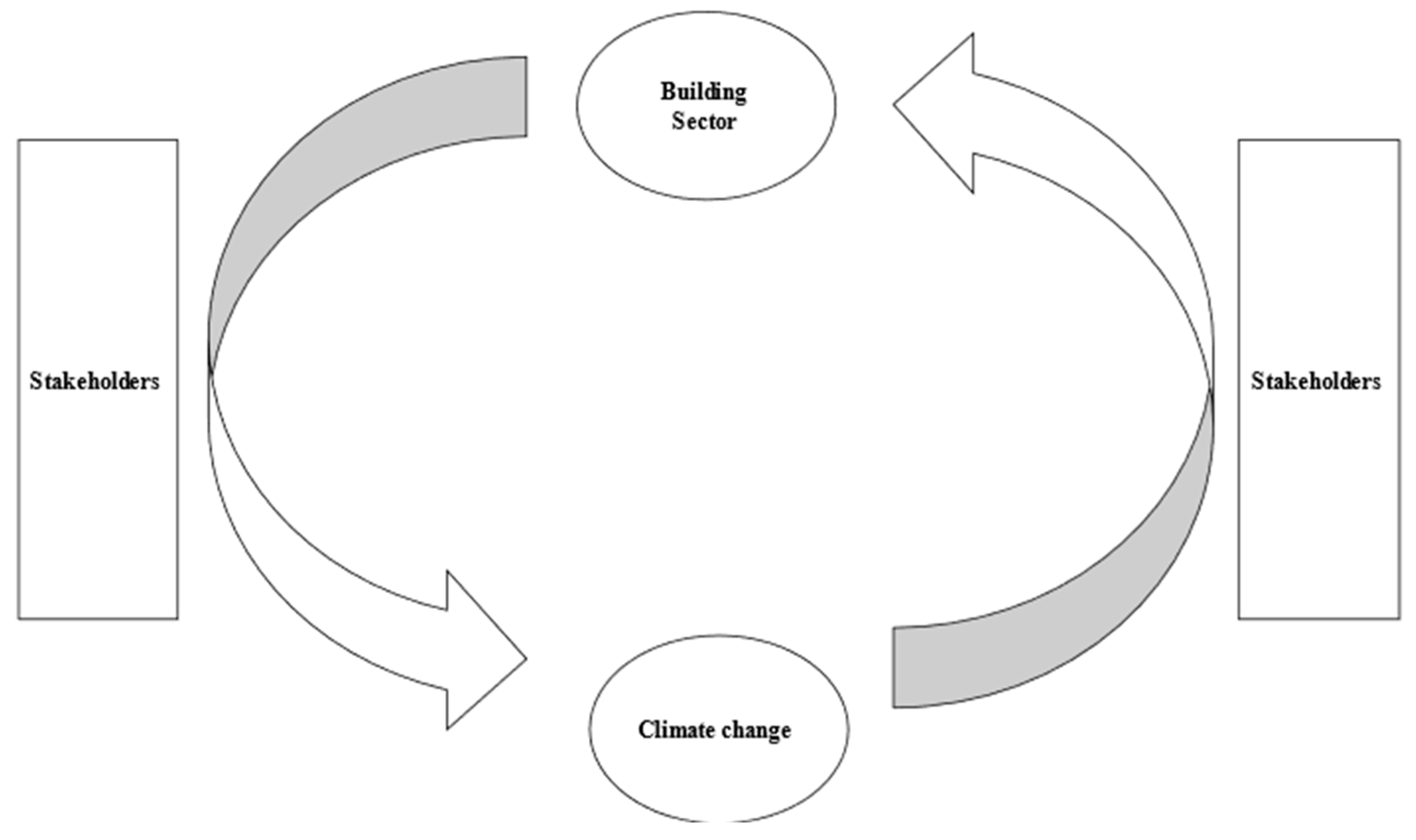
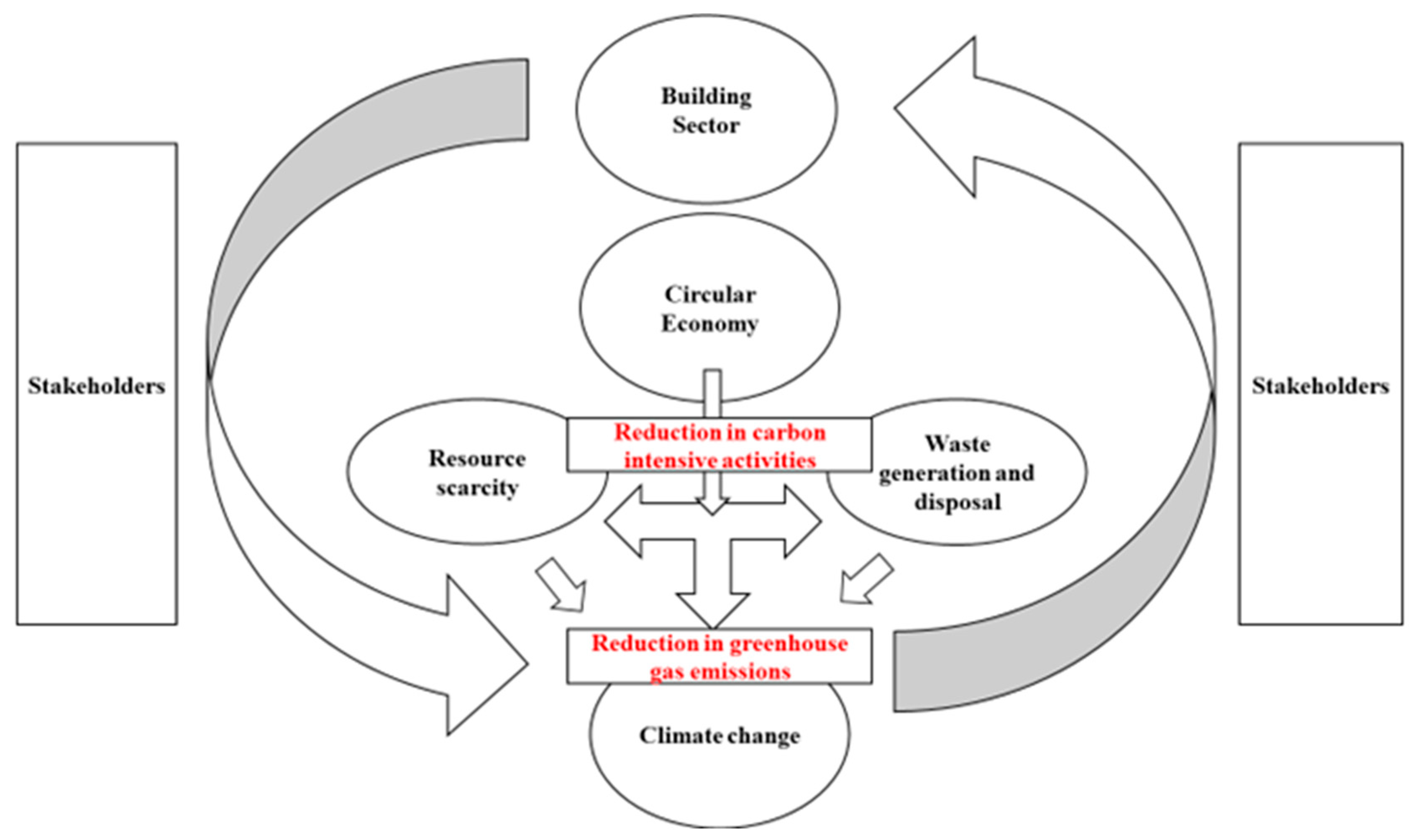
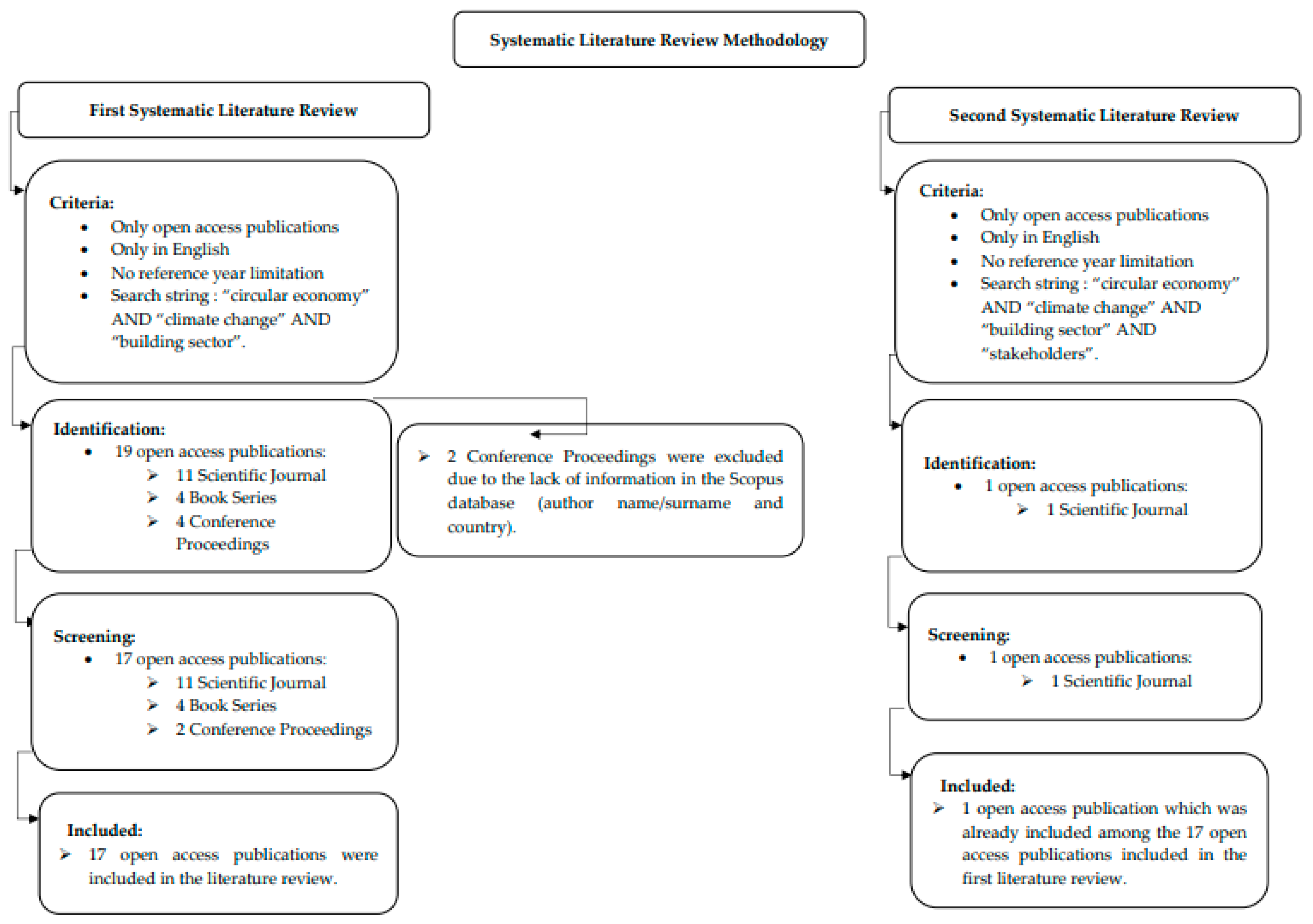
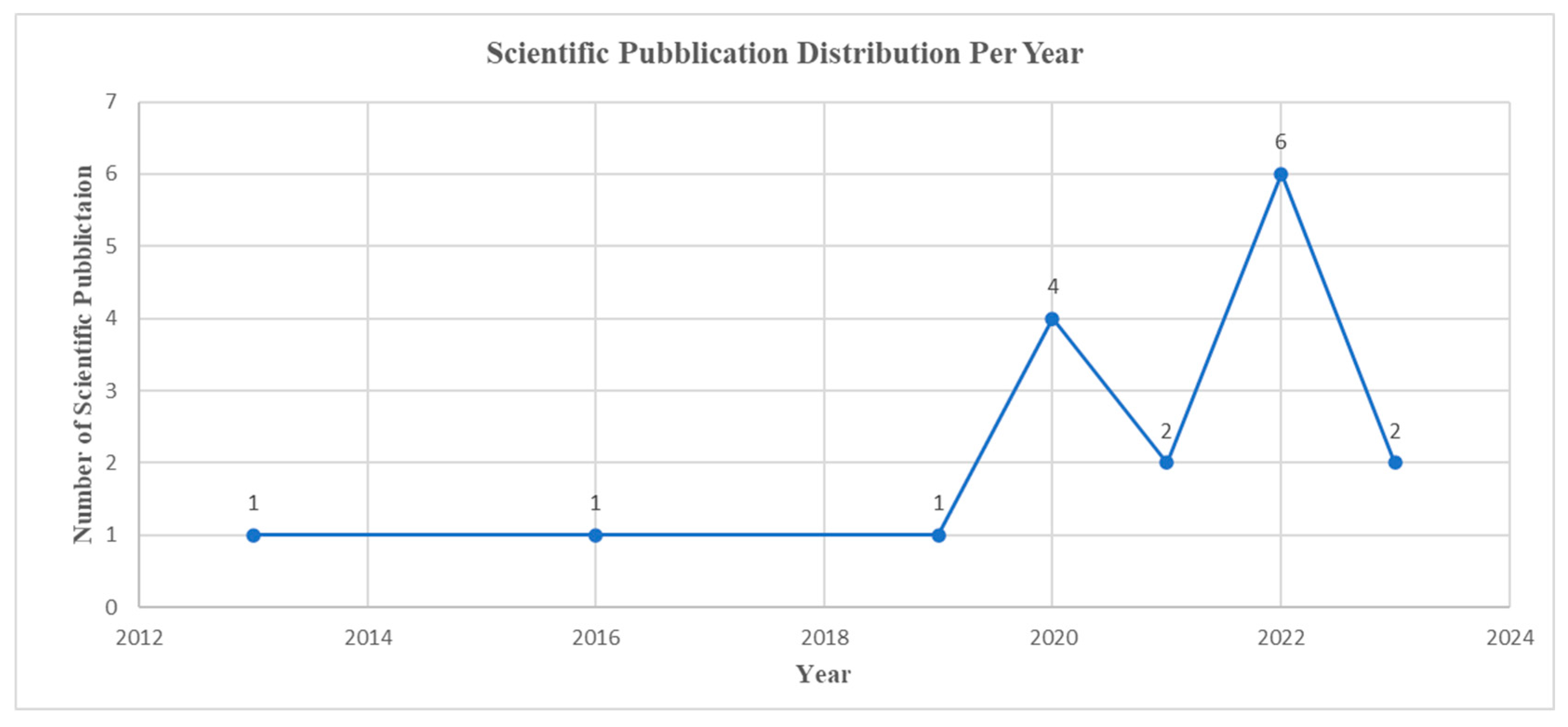
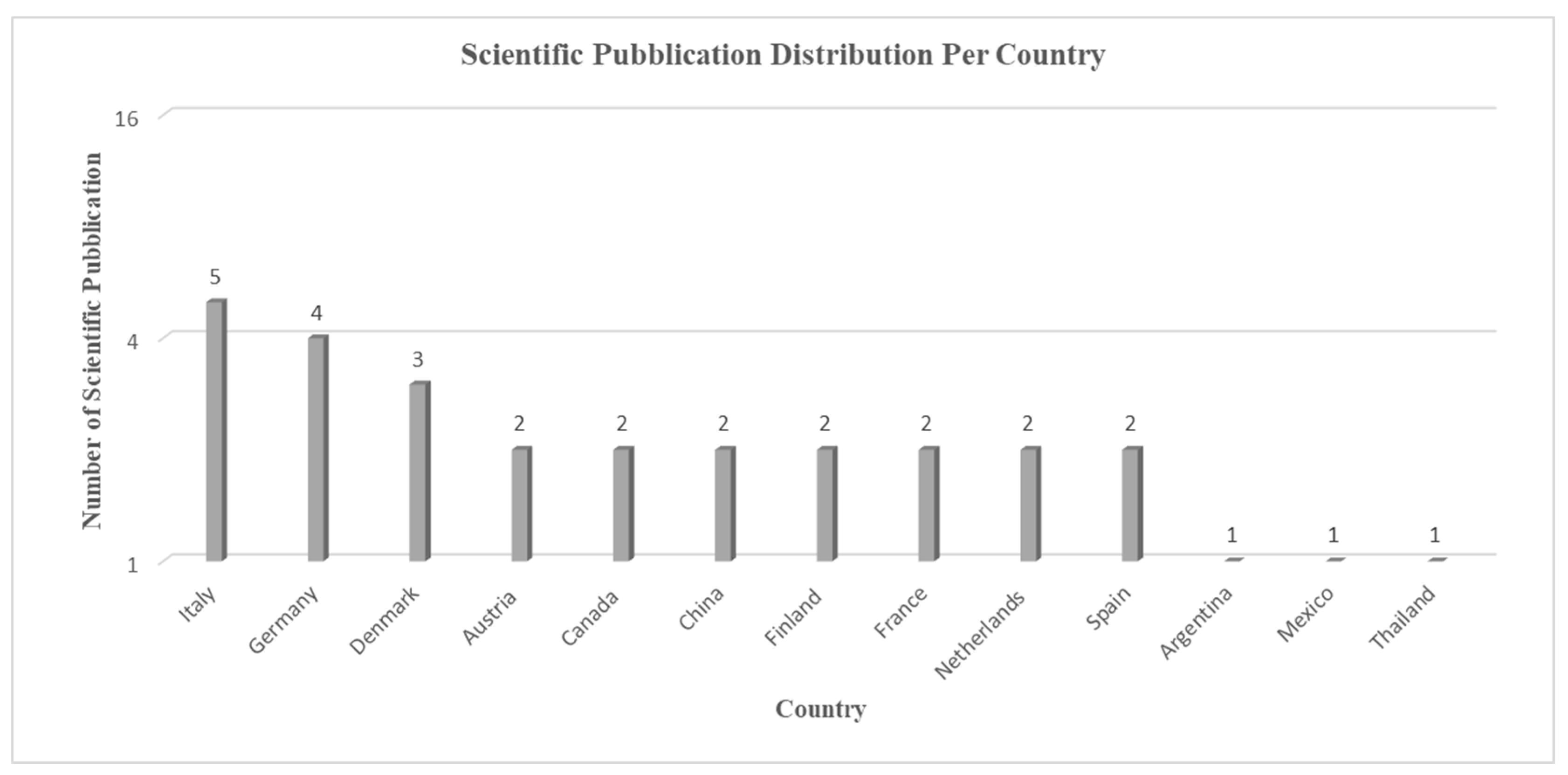
| Circular Economy Principle | Strategy | Goal |
|---|---|---|
| Elimination of waste and pollution to decline greenhouse gas emissions across value chains | Designing for circularity | Targeting the design phase for the integration of circular economy strategies like the design for disassembly, modularity, repairability, flexibility, etc., so that circulation of products, components, and materials are ensured. |
| Eliminating waste | Declining the amount of material lost and waste generation during production thanks to design out waste. | |
| Substituting materials | Promoting circular materials instead of new production. | |
| Circulation of products and materials to retain embodied energy | Reusing of products and components | Conserving products and components embodied energy and other valuable resources by keeping them in use to reduce the GHG emissions associated with new production and end-of-life treatment. |
| Recycling of materials | Avoiding new virgin material production and end-of-life treatment by recirculation of materials while reducing greenhouse gas emissions | |
| Regeneration of nature to sequester carbon in the products, material, and soil | Regenerative production | Managing agroecosystems that provide food and materials in ways that create positive outcomes for nature |
Disclaimer/Publisher’s Note: The statements, opinions and data contained in all publications are solely those of the individual author(s) and contributor(s) and not of MDPI and/or the editor(s). MDPI and/or the editor(s) disclaim responsibility for any injury to people or property resulting from any ideas, methods, instructions or products referred to in the content. |
© 2023 by the authors. Licensee MDPI, Basel, Switzerland. This article is an open access article distributed under the terms and conditions of the Creative Commons Attribution (CC BY) license (https://creativecommons.org/licenses/by/4.0/).
Share and Cite
Kaya, F.E.; Monsù Scolaro, A. Circularity as a Climate Change Mitigation Strategy in the Building Sector: The Stakeholder’s Involvement in the Interconnected Life Cycle Phases. Sustainability 2023, 15, 7554. https://doi.org/10.3390/su15097554
Kaya FE, Monsù Scolaro A. Circularity as a Climate Change Mitigation Strategy in the Building Sector: The Stakeholder’s Involvement in the Interconnected Life Cycle Phases. Sustainability. 2023; 15(9):7554. https://doi.org/10.3390/su15097554
Chicago/Turabian StyleKaya, Fuat Emre, and Antonello Monsù Scolaro. 2023. "Circularity as a Climate Change Mitigation Strategy in the Building Sector: The Stakeholder’s Involvement in the Interconnected Life Cycle Phases" Sustainability 15, no. 9: 7554. https://doi.org/10.3390/su15097554
APA StyleKaya, F. E., & Monsù Scolaro, A. (2023). Circularity as a Climate Change Mitigation Strategy in the Building Sector: The Stakeholder’s Involvement in the Interconnected Life Cycle Phases. Sustainability, 15(9), 7554. https://doi.org/10.3390/su15097554






